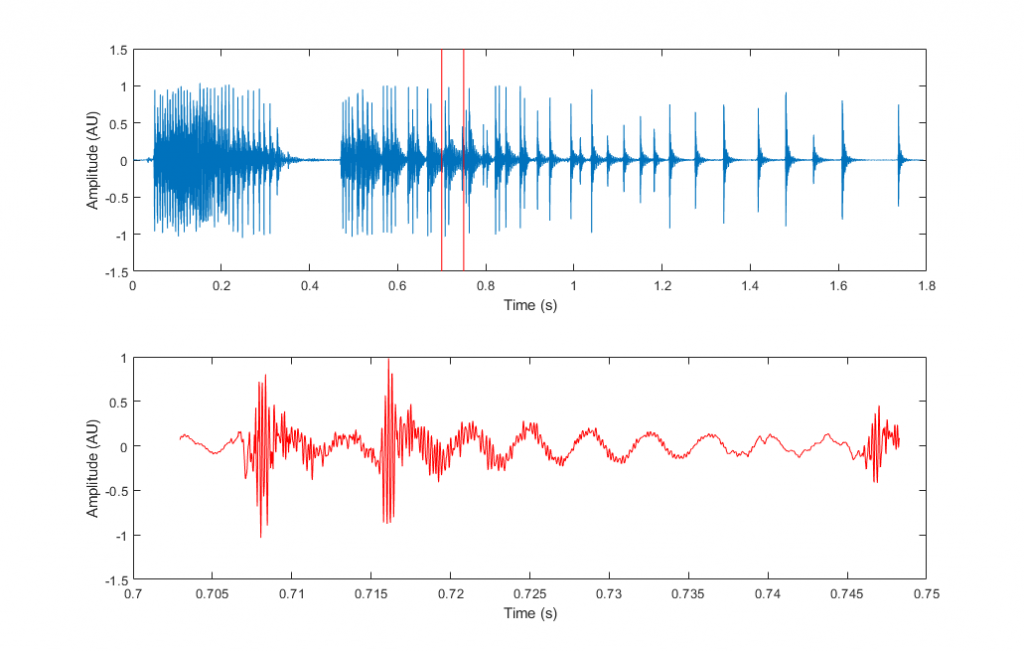Question: If farts were speech, what would they sound like?
Short answer: Shouting.
Long answer: An ongoing area of research at the College concerns the synthesis of purely artificial fart sounds. The goal is to create realistic farts from a physiological model of the rectum and anus, and in this regard our work is similar to other, less interesting work in the field of synthetic biology.
Our approach borrows heavily from the field of speech synthesis, which relies on something called the source-filter model (Fant, 1970). In this model, the flow of air through the windpipe is modeled as broadband noise, which is then filtered by resonances in the mouth and nasal cavity. Importantly, the flow of air is gated by the glottis, which is capable of opening and closing rapidly, so that certain speech sounds occur in pulses.
The situation is similar with farts: Air is shaped by acoustic resonances in the rectum and pulsed by the external sphincter. In our previous work, we have modeled these influences to produce artificial fart sounds that were passably realistic – our fart detection algorithm gave them a ~60% chance of being real farts.
But these artificial farts lacked a certain quality. They sounded decidedly artificial, with a hollowness that suggested a lack of warmth or timbre. Timbre is a sound quality that is often described subjectively as “color” or “brightness”. It is often associated with higher-frequency harmonics in musical instruments, which are easily incorporated into our source-filter model of farts, as described previously. However, from our previous efforts, it appears that reproducing the spectral content of farts is not sufficient to create a realistic fart sound.
It turns out that for many musical instruments, as well as the human voice, the apparatus that generates the sound is nonlinear, so that the sound frequencies vary with the amplitude of the signal. This is also true of farts, as can be seen in the example plotted here:

The waveform of the fart (top) is characterized by the typical pulses created by the opening and closing of the external anal sphincter. Zooming in on a few of these pulses (bottom) reveals that the high frequency components of the sound are apparent only when the amplitude of the waveform is large. The power spectrum of the full fart (blue) is compared to that of the pulses (red) here:

Clearly the loud pulses are associated with higher sound frequencies. Audio of this fart can be heard here:
The power spectrum can be characterized in compact form by its spectral slope, which relates frequency to power on a log scale. For speech, the frequency typically scales according to the following equation:

where w is sound frequency, S is power for baseline speech amplitudes, and a is a scaling factor that determines how the spectrum changes with volume. For speech, the value of a can approach 1 for whispering, and it is typically 0.35 for normal speech levels.
Analyzing the data above reveals that for farts, we have a = 0.147, which is similar to what occurs in human speech during shouting, as shown here (Mokhtari et al., 2018):

In this plot, the thick line on the bottom shows the spectrum for whispered speech, and the thick line on top shows similar data for shouted speech. The thin lines in the middle correspond to intermediate volumes. The data indicate that shouting is associated with a value of a for this speaker of approximately 0.1, which is similar to the value obtained above with certain segments of farts.
Thus, our analysis suggests that farting is formally similar to shouting through the anus, as can be heard in certain of our previous recordings:
We shall incorporate this hypothesis into our source-filter model, with the hopes of generating more realistic fart sounds. To be continued.
